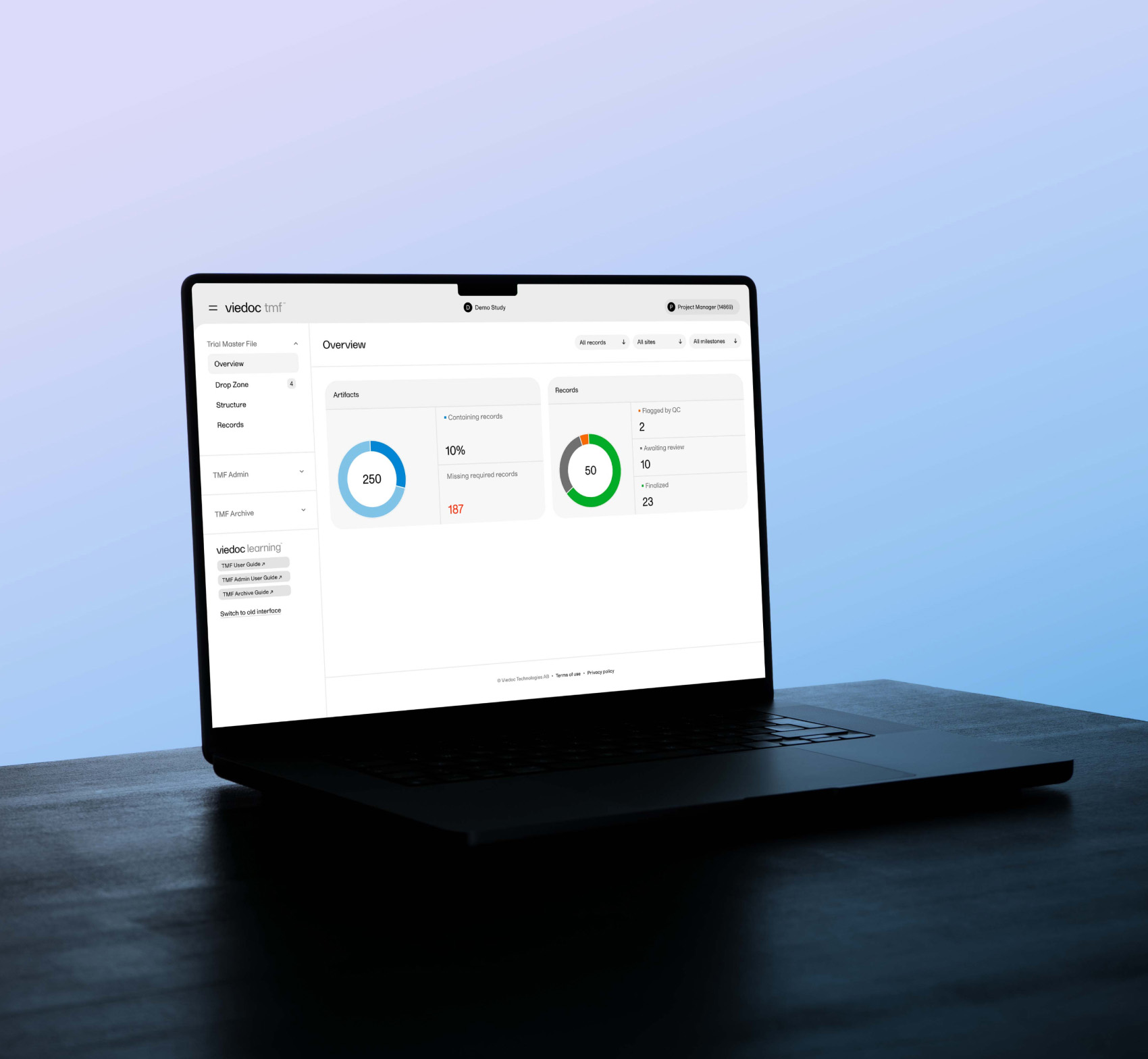This is the first in a series of articles exploring the current EDC landscape and the pressing challenges shaping the industry’s evolution. Whether it's due to increasing complexity of clinical trials, handling a higher volumes of data, or managing the demand for wearable and connected devices, each article will highlight critical areas that need to be addressed.
In this series, we will consult two of our experts to help navigate these challenges and reimagine the way forward. Majd Mirza, Viedoc’s Chief Innovation Officer, holds a PhD in experimental medicine and began his journey with Viedoc as a developer 15 years ago. Binish Peter, a Technical Fellow at Viedoc, has an extensive background in software engineering.
It’s time to think beyond EDC.
Setting the scene
An Electronic Data Capture (EDC) software revolutionizes clinical trial data management in clinical trials by replacing traditional paper-based methods with efficient digital solutions.
In the late 1990s and early 2000s, clinical trial data was still primarily collected on paper forms, which were then faxed or mailed to a central location. The introduction of EDC software marked a pivotal shift by converting paper forms into electronic formats. This advancement greatly reduces the time needed for data entry, minimizes errors, and eliminates data silos by serving as a central hub for source data, significantly improving the efficiency and accuracy of clinical trial processes.
Overall, EDC clinical trial software has become essential in modern clinical trials, transforming data management from a cumbersome, error-prone task into a streamlined, efficient process that enhances the reliability and speed of clinical research.

What issues do EDCs solve?
Majd explains, “EDC was initially built to solve one problem—to transform paper forms into electronic ones. Specifically to improve, validate, and maintain the ease, accuracy, and integrity of data entry. And today EDC is the de facto or gold standard used in clinical trials.”
EDC software offer numerous benefits. They enhance data quality through built-in validation checks and real-time monitoring, minimizing manual errors. By consolidating data from multiple sources into one system, EDC software allows for quicker data collection and faster decision-making. Forms can be built and deployed rapidly, data entry is streamlined, and querying and validation are resolved in real time, all within a single system.
Furthermore, EDC software ensure regulatory compliance and data security by maintaining secure, cloud-based storage with role-based access, thereby ensuring data integrity and meeting industry regulations. They provide robust audit trails and promote collaboration among stakeholders, enabling everyone to access the same data with designated permissions. This facilitates real-time issue resolution and enhances the overall efficiency of clinical trials.
What challenges exist within clinical trials today?
The complexity of clinical trials has increased significantly over the last decade, particularly in phase III trials. This rise is due to increasingly complex study protocols and designs featuring a growing number of endpoints and data sources, leading to an exponential increase in data volume.
It is becoming increasingly evident that EDC systems, as they stand, are inadequate for managing the intricate data collection and integration needs of today's clinical trial environment.
Data volume
Majd explains the issue of managing the sheer volume of data, “Ten years ago, Viedoc’s EDC software was built around discrete data points, and for collecting data in visits and forms. But now, in a typical phase III trial, there are about 3.6 million data points, which is three times the volume compared with a decade ago.” (Tufts Center for the Study of Drug Development, vol 23 and vol 25).
“We have moved from discrete data points that were manually entered to data streams pushing data in real-time on an ongoing basis from all the wearable and connected devices we’re now using.”
These wearable and connected devices do have the advantage of eliminating the need for data transcription from one source or another, reducing manual data entry and associated errors, and eliminating the need for source data verification. This decreases the load on site staff and makes participating in clinical trials much easier for patients, moving from active to passive data collection.

Different data sources
CROs and sponsors use an average of six applications within any given clinical trial (Tufts Center for the Study of Drug Development, vol 20). One of the biggest challenges is ensuring seamless integration between all these applications and, as far as possible, eliminating the need for data transcription from one source to another.
Currently, a substantial portion of clinical trial data is collected outside traditional EDC systems, complicating data management. Data streams come in real-time from many different data sources, such as labs, imaging, electronic journals, wearables, and biomarkers. However, EDC clinical trial software wasn't designed to store such large amounts of data. Much of this data is in a semi-structured or unstructured form, necessitating standardization before any sense can be made of it.
Current EDC systems are being pushed to their limit due to the escalation in volume and diversity of data. EDCs were initially seen as the clinical trial hub or core repository, but with all the raw data and new data formats, it’s challenging to accommodate everything into the system. The move to data streams means manual data checks and raising queries to verify data are not applicable anymore, so more automated methods are required to handle the data and ensure quality.
 Binish sums up by saying, “EDC has always been about solving something electronically. It is not just about entering data. We need an evolution in the system so it can process the data and collect it.”
Binish sums up by saying, “EDC has always been about solving something electronically. It is not just about entering data. We need an evolution in the system so it can process the data and collect it.”




